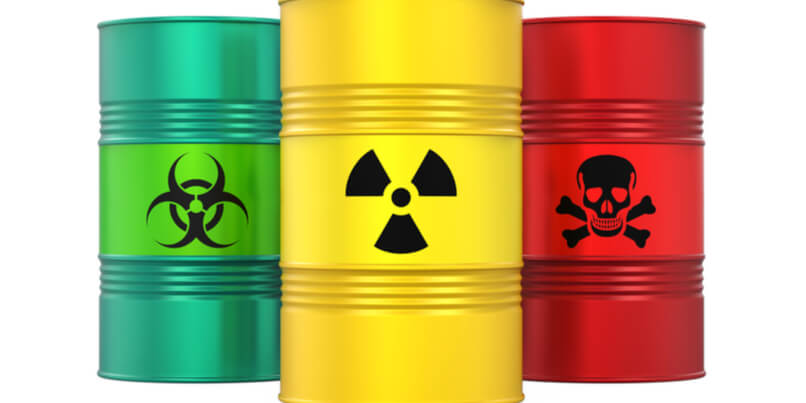 The continued development of chemical and biological weapons, the re-emergence of Novichok nerve agents and the impacts of the COVID-19 pandemic are all placing unprecedented pressure on chemical, biological, radiological and nuclear (CBRN) response capability worldwide.
The continued development of chemical and biological weapons, the re-emergence of Novichok nerve agents and the impacts of the COVID-19 pandemic are all placing unprecedented pressure on chemical, biological, radiological and nuclear (CBRN) response capability worldwide.
In an article published in the online publication Defense News in January 2021, retired Brigadier General, William King examines the challenges that lie ahead in the task of countering weapons of mass destruction (CWMD).
King focuses on four aspects that he believes will be especially significant in ensuring the cohesion, integration and strengthening of the global CBRN community:
1) The development of situational awareness across CBRN
Understanding the activities, capabilities and limitations across the full range of CBRNe threats is vital, says King.
Currently though, the CMWD community remains largely "siloed" when it comes to the ability of personnel to cross the boundaries of chemical, biological, radiological or nuclear.
By developing more robust situational awareness, says King, there is the opportunity to increase the engagement and coordination of all mission partners and to enhance overall responsiveness, resilience and adaptability.
2) Greater coordination at national and international level
King questions whether CWMD centers are functioning with sufficient synergy, efficiency and effectiveness when it comes to their activities and planning.
While new efforts such as the joint Interpol/U.N initiative offer the opportunity for increased engagement across law enforcement agencies, there is also the need to develop these partnerships at the international level as well as across CMWD coalitions.
3) Recognizing the complexity of the CWMD mission
The contribution of different authorities - each with their own strategies, tactics and skill sets - brings with it the added risk of complicating the CMWD mission.
The task of counterproliferation for example is typically one that combines diplomatic, intelligence and military effort, nonproliferation relies on the engagement of the legal and diplomatic communities and consequence management calls on the expertise of first responders and hazardous materials (HazMat) teams.
4) The ability to adapt to continuously evolving CBRN threats
The digital age is empowering threat actors in a way never seen before, with highly-networked online communities having easy access to the technology, the know-how and the materials that they need to deploy WMDs quickly and from any geographical location.
Says King: "Reformulated strategies and reorganizations alone will not sufficiently protect against today’s highly complex, multiregional, overlapping threats by adversaries old and new.
"The shifting global landscape requires new thinking and solutions."
The new technologies addressing the CBRN training challenge
In the bid to tackle the challenges of CBRN threats there is an increasing interest in new training innovations that can expand operational knowledge and enhance response capability.
One of the core elements underpinning effective CBRN proficiency is the opportunity to train hands-on against life-like scenarios.
The integration of simulators and simulator-based training have been pivotal in expanding CBRNe knowledge and competency by providing an environment in which trainees can safely train using equipment that replicates their real-life devices.
Increasingly though there has been growing interest in CBRN training that enables personnel to use their actual operational equipment.
CBRN training with real-life detectors
The Radiation Field Training Simulator (RaFTS) now makes it possible for instructors to create spectrometry-based training scenarios in which trainees can use their real detectors in the training environment.
With a simple modification to the actual device, the required RaFTS signalling is injected directly into the trainee’s radiation detector.
Once RaFTS-enabled, the detectors can then respond to safe Radsim radiation sources to enable users to practice the entire cycle of radiological detection, including reach-back.
RaFTS’ based simulators can be deployed with a wide range of Argon’s radiation simulators including Mirion AN/VDR-2 / RDS100 Beta Gamma simulators; UDR13/14/15 dosimeters and Thermo FH40G / RadEye.
Although the initial focus of RaFTS has centered on the simulation of radiological spectrometry, there is also the capacity for the technology to be applied to a much wider variety of chemical detectors, including handheld devices, mobile devices, backpack detectors and portal monitors.
As CBRN threats continue to increase and evolve, there is a growing need for innovative new approaches to the provision of realistic training.
With the addition of new CBRN training solutions such as RaFTS, trainers can now provide their students with exposure to real-life detector use that will build confidence, develop situational awareness and support the CBRN mission.







